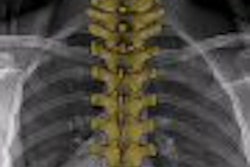
NEW YORK (Reuters Health), Jan 11 - A computer program that analyzes routine dental x-rays could offer a simple, cheap way to detect the bone-thinning disease osteoporosis, new research suggests.
British researchers found that a software program they developed was able to spot signs of declining bone density in dental x-rays of the lower jaw -- a potential sign of osteoporosis.
The findings, they report, suggest that routine dental X-rays could provide an inexpensive way to provide wide screening of older adults for osteoporosis. Those with signs of bone thinning in the jaw could be referred for more expensive osteoporosis testing.
In the U.S., the Preventive Services Task Force recommends that all women age 65 or older be screened for osteoporosis -- the "gold standard" for screening is a relatively expensive test called dual energy X-ray absorptiometry (DXA). Medicare will pay for this test every two years.
In the UK, the national health system currently has no program for osteoporosis screening.
That means many people with the disease -- most often older women -- won't know they have it until they suffer a fracture, said Dr. Hugh Devlin of the University of Manchester, the lead author on the new study.
The study findings, published online in the journal Bone, are based on bone X-rays of 652 European women between the ages of 45 and 70. All of the women underwent DXA, as well as panoramic dental X-rays, which show the whole jaw.
The DXA tests found osteoporosis in the hip or spine in 140 women. Analysis of dental x-rays picked up more than half of these cases, the researchers found.
More work is needed before dental x-rays become part of osteoporosis screening, Devlin said. "We want to find out the attitude of patients and doctors to this new role of dentists identifying patients they suspect of being at high risk of osteoporosis," he noted.
The next step, according to Devlin, will be for an x-ray equipment company to take to the idea and integrate the software into its products.
By Amy Norton
Last Updated: 2007-01-10 11:41:17 -0400 (Reuters Health)
SOURCE: Bone, online December 27, 2006.
Copyright © 2007 Reuters Limited. All rights reserved. Republication or redistribution of Reuters content, including by framing or similar means, is expressly prohibited without the prior written consent of Reuters. Reuters shall not be liable for any errors or delays in the content, or for any actions taken in reliance thereon. Reuters and the Reuters sphere logo are registered trademarks and trademarks of the Reuters group of companies around the world.


















